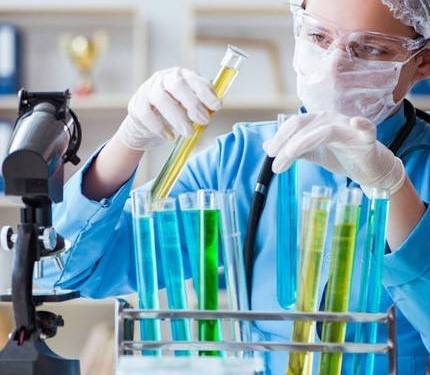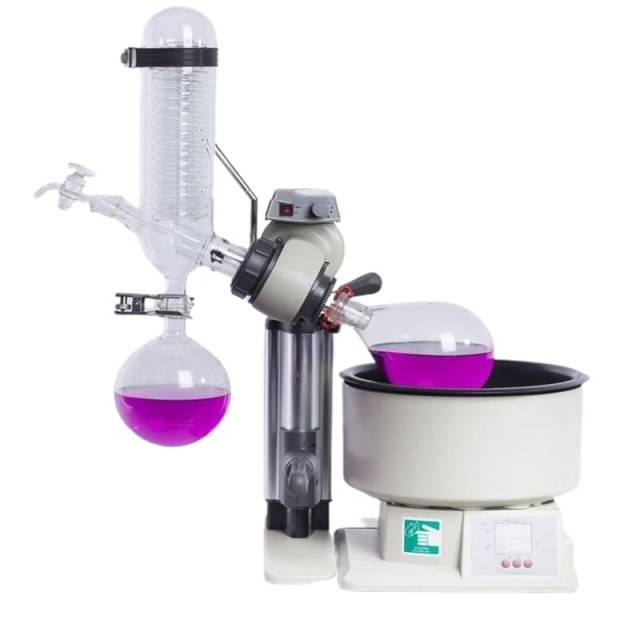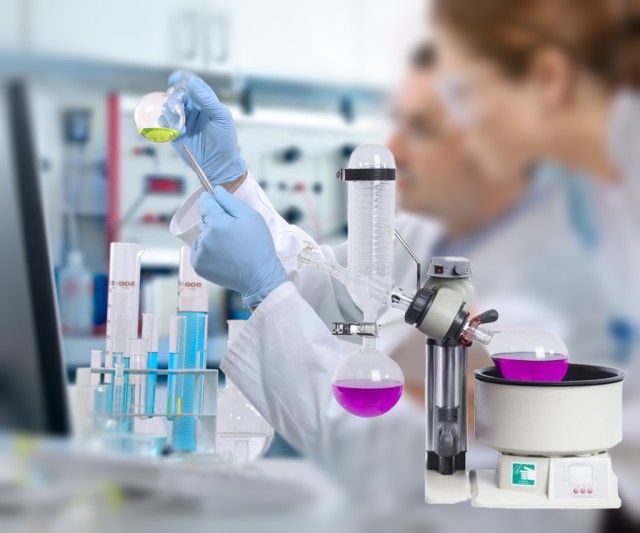Introduction to Rotary Evaporators
Rotary evaporators are laboratory equipment used for the separation of solvents from samples. They are commonly used in chemistry, research, and pharmaceutical industries for the concentration of solutions and extraction of active compounds. The principle behind rotary evaporators is that the sample is heated and rotated in a flask to increase its surface area, allowing for faster evaporation. The vapor produced is then condensed and collected in a separate flask. Rotary evaporators consist of several components, including a flask, bump trap, bath, and condenser. They are available in different sizes and configurations to suit various applications.
Table of Contents
How Rotary Evaporators Work
Rotary evaporators or "rotovaps" are laboratory instruments that are used for the distillation and concentration of liquids. They work by removing solvents from a sample through a combination of evaporation and condensation. Here's how they work:
Step 1: Evaporation
The liquid sample is placed in a round-bottomed flask, which is then rotated at a constant speed while being heated. This causes the liquid to evaporate, leaving behind any solid impurities or other substances.

Step 2: Condensation
The evaporated liquid rises and is then condensed by the condenser, which can either be a water-cooled coil or a "cold finger". This converts the vapor back into a liquid, which is then collected in a separate flask.
Step 3: Collection
The condensed liquid is collected in a separate flask, while any remaining impurities or unwanted substances are discarded.
Step 4: Vacuum
Rotary evaporators often use vacuum pumps to further speed up the evaporation process. The use of a vacuum pump reduces the pressure in the liquid-filled flask until it is lower than the vapour pressure of the liquid being used. This causes the solvent to boil at a lower-than-normal temperature, reducing or eliminating the need for a heat source.
Step 5: Heating bath
A heated fluid bath, which is usually water, heats the sample in the flask. The temperature of the bath can be adjusted to control the rate of evaporation.
Step 6: Motor mechanism
The motor mechanism rotates the flask containing the liquid sample and keeps it moving at a constant speed, ensuring that the sample is evenly distributed and that the surface area is maximized.
Step 7: Condensate-collecting flask
The condensate-collecting flask is located at the bottom of the condenser and it catches the distilling solvent after it re-condenses.
Overall, rotary evaporators are a versatile and effective tool for sample concentration and purification in laboratory settings. They are commonly used in chemistry, biochemistry, and pharmacology research, and are especially useful for samples that are sensitive to heat or that contain volatile solvents. Rotary evaporators come in different sizes and capacities, and can be automated for ease of use.

Components of a Rotary Evaporator
A rotary evaporator is a laboratory instrument that is used to concentrate samples through the process of evaporation. It consists of several components that work together to achieve the desired outcome. Here are the main components of a rotary evaporator:
Flask
The flask is the container that holds the liquid sample to be distilled. It is typically made of glass and comes in various sizes ranging from 50 mL to 5 liters.
Condenser
The condenser is a glass tube that is coiled around a water-cooled jacket. It is responsible for cooling and condensing the vapor that is evaporated from the liquid sample.
Heating Bath
The heating bath is a water bath that is used to heat the flask containing the liquid sample. It is usually made of stainless steel and is equipped with a temperature control system.
Rotary Joint
The rotary joint is the mechanism that connects the flask to the condenser and allows the flask to rotate. It also provides a seal to prevent vapor from escaping.
Vacuum Pump
The vacuum pump is used to create a vacuum inside the rotary evaporator, which helps to lower the boiling point of the liquid and facilitate the evaporation process.
Collection Flask
The collection flask is the container that collects the condensed liquid after it passes through the condenser. It is typically connected to the condenser via a glass tube.
Vacuum Controller
The vacuum controller is used to regulate the vacuum inside the rotary evaporator. It is equipped with a gauge that displays the pressure inside the system.

1. Upright dual color condenser;2.PTFE cock switch;3. Mechanical pointer vacuum gauge;4. Rotate the host;5.PTFE cock discharge switch;6. Spin bottle;7. Collection bottle;8. Constant temperature rising and falling water oil bath;9.Control Panel;10.PTFE cock discharge valve
In addition to these main components, there are several specialized accessories that can be added to a rotary evaporator to assist with challenges that arise during the evaporation process. Some of these accessories include a foam sensor, a vapor duct with frit for solid samples, an automatic distillation function for processing a sample with unknown characteristics, specialized amber glass for sunlight-sensitive samples, and a Soxhlet accessory for performing extractions.
When selecting a rotary evaporator, it is important to consider factors such as the sample properties, batch size, and frequency of operation. The vacuum system used with rotary evaporators can be as simple as a water aspirator with a trap immersed in a cold bath (for non-toxic solvents), or as complex as a regulated mechanical vacuum pump with refrigerated trap. Glassware used in the vapor stream and condenser can be simple or complex, depending upon the goals of the evaporation, and any propensities the dissolved compounds might give to the mixture.
Overall, the components of a rotary evaporator work together to concentrate samples more efficiently and accurately, making it an essential tool in many research and testing applications.

Considerations Before Buying a Rotary Evaporator
When looking to purchase a rotary evaporator, there are several important considerations to keep in mind to ensure that you select the right equipment for your laboratory's needs.
Sample Size
One of the most important factors to consider when purchasing a rotary evaporator is the size of the equipment, which is directly proportional to the amount of sample that needs to be concentrated. Microtiter plates and micro centrifuge tubes work best in a centrifugal vacuum concentrator, while a vortex evaporator is recommended for large samples up to 450mls.
Sample Type
The type of sample being concentrated is also an important factor to consider. Acids require an acid-resistant system, while solvents can damage plastic and rubber components, making it important to select an appropriate system to prevent damage. A -50C cold trap is ideal for aqueous-based samples, a -85C cold trap traps most solvents, and a -105C cold trap is recommended for alcohols.
Heat Sensitivity
If you are working with heat-sensitive samples, it is important to select a rotary evaporator that has refrigeration built into it to control the temperature and maintain the viability of heat-labile samples. Even at ambient set point, vacuum concentrators add heat through friction, which can be detrimental to heat-sensitive samples.
Safety Features
Safety is always a concern when working with laboratory equipment, and a variety of safety accessories can be used to ensure the safety of the operators. As glassware is under extreme pressure due to the vacuum pump as well as being heated, coated glassware can be used to ensure flasks don’t shatter during operation. Shields and protective hoods with ventilation can also help ensure operator safety. Some manufacturers offer advanced options, such as motorized lifts and shutoff procedures for power outages or if the heating bath goes dry.
Environmental Considerations
For the condensing and collection of samples, many options exist. Condenser coils or cold fingers are generally paired with circulating tap water or dry ice. While these methods are adequate for the purpose, constant changing of water to prevent algae buildup can get wasteful, along with a constant need for dry ice. Many manufacturers now offer circulating chillers which can be attached to evaporators, allowing for highly efficient condensation without the waste associated with using tap water or dry ice.
By considering these factors before purchasing a rotary evaporator, one can select the equipment that is best suited for their laboratory's needs, ensuring that the concentration process is efficient, safe, and reliable.
Uses of Rotary Evaporators
Rotary evaporators are versatile laboratory instruments that find extensive use in various fields such as chemistry, pharmaceuticals, and biology research. These devices are used to concentrate and purify samples by removing solvents under reduced pressure. Here are some of the main uses of rotary evaporators:
Concentration and Purification of Compounds
Rotary evaporators are commonly used to isolate and purify compounds from complex mixtures. They are particularly useful for removing solvents from sensitive samples that cannot be exposed to high temperatures or prolonged exposure to air. Some applications of rotary evaporators include the preparation of oils, fragrances, and flavors, the extraction of natural compounds from plants, and the synthesis of new organic compounds.
Analysis and Further Processing
Rotary evaporators are also useful for the concentration of solutions for analysis or further processing, such as in the production of biofuels or pharmaceuticals. They can also be used to remove impurities from samples before analysis, making them crucial for research and development in the pharmaceutical industry.
Solvent Recovery
Another important use of rotary evaporators is solvent recovery. These devices are used to recover expensive solvents for reuse, reducing the cost of experiments and increasing sustainability. Rotary evaporators can recover solvents with high efficiency, making them essential for environmental protection and cost reduction.
Food and Beverage Industry
The use of a rotary evaporator is not limited to the scientific and industrial fields. In recent years, rotary evaporators have found use in the cooking industry. The technique of molecular cooking uses the principles of chemistry and physics to create innovative cooking styles. The use of a rotary evaporator to non-heat evaporate liquid, thus retaining volatile aromatics that are easily lost by heating, is a perfect combination of modern culinary and experimental instruments. Rotary evaporators can be used to extract water from all kinds of juices, which makes juices have a better taste.

Cannabis Industry
Rotary evaporators have become increasingly popular in the cannabis industry, where they are used to extract cannabinoids and terpenes from plant material. The resulting extracts can be used to make various products, including edibles, tinctures, and topicals. Rotary evaporators are preferred to other extraction methods because they offer greater efficiency, higher yields, and better quality extracts.
In conclusion, rotary evaporators are essential laboratory instruments that find extensive use in various fields. They are not only useful for concentrating and purifying compounds, but also for solvent recovery, food and beverage industry, and cannabis industry. The versatility of rotary evaporators makes them crucial for research and development, quality control, and cost reduction in many industries.
Related Products
Related Articles
- What Is Boiling Point Rise In Evaporators?
- The Importance of Water Distillation in the Laboratory: Ensuring Purity and Quality for Accurate Results
- How Rotary Evaporator Can Improve the Quality of Your Distillate
- How Rotary Evaporators are Revolutionizing Distillation
- Understanding the Science Behind Short Path Distillation

